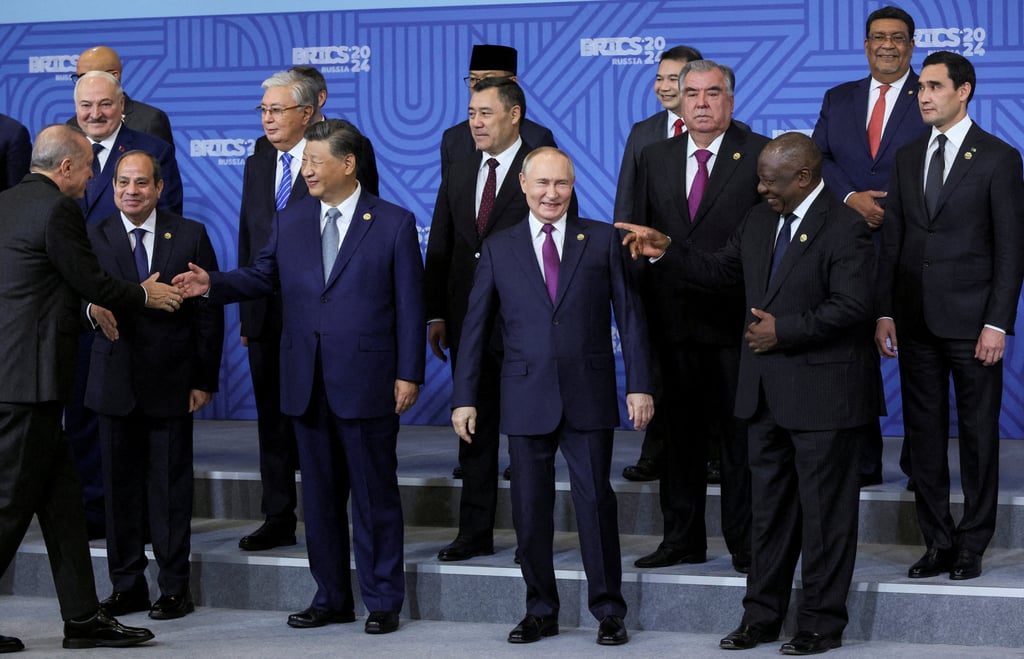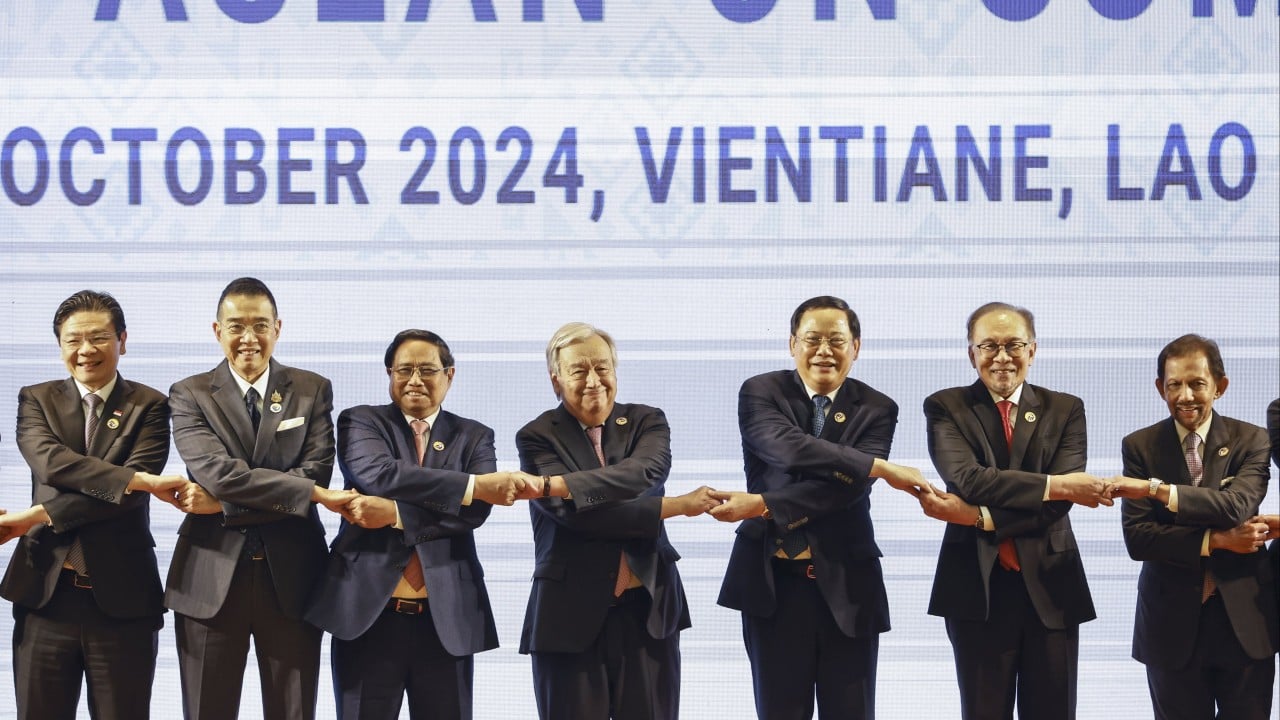The latest Brics summit in Kazan, Russia, was attended by 36 leaders and top officials, as more countries seek to join the grouping that appears to offer an alternative to the Western-led system. A geopolitical bloc, Brics – named after its earliest members Brazil, Russia, India, China and South Africa – is also increasingly a geoeconomic bloc as economic partnerships grow.
Advertisement
Member states now include Egypt, Ethiopia, Iran and the United Arab Emirates (UAE), while partner countries have expanded to include Asean members Indonesia, Malaysia, Vietnam and Thailand. Interest from others in the Association of Southeast Asian Nations is growing. Laos’ president, Thongloun Sisoulith, attended the summit and Myanmar has expressed the desire to join Brics as an observer.
For Asean, the question is: if its members join Brics, will it make Asean less relevant or threaten obsolescence?
Given that Indonesia, Malaysia, Vietnam and Thailand represent over 480 million people, more than 70 per cent of the Asean population, their interest in becoming full Brics members may well affect Asean cohesion, alignment and the bloc’s unique role and influence in the global economic order.
But what makes Brics so attractive to developing nations, particularly those in Southeast Asia?

First, Brics aims to show more inclusivity than other groupings. Indonesia, for instance, is the world’s largest Muslim democracy, while Malaysia and Thailand are multicultural constitutional monarchies, and Vietnam is a socialist republic. As long as countries share similar goals, they are welcomed. This gives Brics a distinct strength and perspective.

